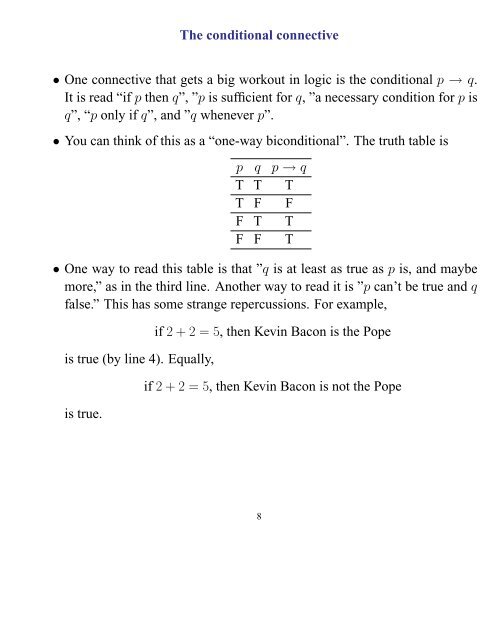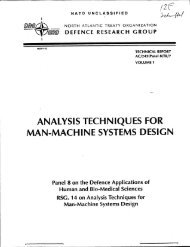EECS 203-1: Discrete Mathematics Winter 2005 Introductory ...
EECS 203-1: Discrete Mathematics Winter 2005 Introductory ...
EECS 203-1: Discrete Mathematics Winter 2005 Introductory ...
You also want an ePaper? Increase the reach of your titles
YUMPU automatically turns print PDFs into web optimized ePapers that Google loves.
The conditional connective<br />
• One connective that gets a big workout in logic is the conditional p → q.<br />
It is read “if p then q”, ”p is sufficient for q, ”a necessary condition for p is<br />
q”, “p only if q”, and ”q whenever p”.<br />
• You can think of this as a “one-way biconditional”. The truth table is<br />
p q p → q<br />
T T T<br />
T F F<br />
F T T<br />
F F T<br />
• One way to read this table is that ”q is at least as true as p is, and maybe<br />
more,” as in the third line. Another way to read it is ”p can’t be true and q<br />
false.” This has some strange repercussions. For example,<br />
is true (by line 4). Equally,<br />
is true.<br />
if 2 + 2 = 5, then Kevin Bacon is the Pope<br />
if 2 + 2 = 5, then Kevin Bacon is not the Pope<br />
8
















